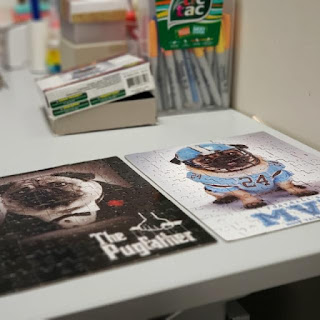By Chantal Jenoure
Great teams are not created by chance. Great teams aren’t just a group of people, told to work together and they automatically become a team. Great teams are created when people are purposefully chosen, and artfully blended together, using similarities, strengths to create synergies to balance out differences, weaknesses and divergences.

Honestly, when I first became a Scrum Master, I struggled with making my team feel like a team. I don't know if it was my drive or if it was the newness and excitement around our project - but somehow we still delivered at least five significant deliverables within our first year. During those 12 months, I struggled with the “responsibility” of “making this group of people work like a team”. I struggled! They seemed to fall apart if I took vacation! It just wasn’t working.
Enter *a new perspective* and *some words of wisdom*😉
One fateful afternoon, when I had no other tricks to pull out of my hat or cards to play, I had a conversation with a manager, who changed my perspective! I explained my troubles and told him of my struggles with “gelling” a particular team member. After listening to me, he simply said, “Maybe XYZ is not a good fit with your team. I could move them to another team and see how well they do there.”
My jaw hit the floor! What a relief to have heard that it was not my incompetence why I wasn’t “fixing” the issue! Some things are just outside of our control - and that’s okay!
I learnt the hard way that a group of people do not automatically become a team. It’s not impossible; but you have to be deliberate in your actions to pull together a group of people - who fit - who get along, understand each other - and are willing to work as a unit to solve a problem. It’s as simple as that.
Here’s a few things I have learnt about building a great team:
All team members must have a similar mindset.
If you have one team member who likes working alone, when it’s important for the team to collaborate (>80% of the time), you’re going to have a problem.
Develop a checklist or a profile of what a great team member would look like.
Should they be good at problem solving? Is it important that the person be willing to learn new tools and technologies at a rapid rate?
Use that checklist or profile when identifying and interviewing suitable candidates.
Have a probationary period with the new/prospective candidate - simply, be open about this from day 1. Be open about the fact that you will be observing them to see how they manage the work, yes, but more so, how well they fit in and match the synergy between other team members.
Let the team decide.
Let them take the lead in deciding if they can see themselves working with this person, day in and out, for the foreseeable future.
Is there really such a thing as ‘right fit’?
I do believe there is. It is such a difference when you are not focusing 90% of your energy and attention into fixing team issues. Being ‘right fit’ for a team means the team members fit well together - like a puzzle.
How do you know when someone is not a good fit?
Observe them. Observe their interactions with other team members. Ask the other team members. Listen to them when they speak - do they understand the project or the task that they are working on? Are they asking the right questions? Do they ask for help? Do they ask clarifying questions? Are they completing their tasks on time? Do they volunteer? Do they participate in discussions? Do they listen to other team members' perspectives?
What do you do when a team member does not seem to be a ‘right fit’?
- Try coaching them - try to better understand them and help them to better understand team dynamics and team norms.
- Encourage your other team members to help in including them in all aspects of the work and get their feedback on how the team handles/understands the work.
- Don’t be afraid to suggest that they switch teams. More often than not, it’s not that they are incapable. It's more that they have little interest in the subject or area of the work that your team is focused on. It may not play into their strengths. So, instead of frustrating them or having them struggle through getting tasks done, maybe trying a different project unlocks their interests and they can better thrive.
How will you know ‘right fit’ if my team is new?
- The best way to do this is observation, conversation and interactions:
- Converse with them - get to know them.
- Create opportunities for the team to get to know each other better through games and activities.
- Observe them as they work and how they interact with other members of the team.
- Then circle back to question 1 🙂.
What if you are not the ‘right fit’ for a team?
That’s okay. You may feel like the odd ball with the team because everyone else gets along and are bonding - but for whatever reason, you may not share the same interests or you find it difficult to communicate or be on the same page with other team members.
- Be open and try to find similarities or commonalities that you can bond with other team members around.
- Create learning opportunities for the team to help you better understand what they are doing.
- Find a confidante on the team who can break things down for you.
- Or be honest with the team and your superior - that you don’t think you’re able to be as effective as you can be and state your reasons for this.
Is there such a thing as ‘right fit’ for a project?
Definitely! As much as Scrum Masters are not required to “do the actual work required” to deliver on the project, it’s essential that it is still within the realm of the Scrum Master’s competence to handle. If it’s hard for the Scrum Master to understand what will be required to take the project from kick off to delivery, there will be a lot of avoidable bumps in the road for the team. So what’s the unofficial rule of thumb? Your most complex projects should be assigned to your most experienced, strongest, most knowledgeable Scrum Masters.
Do you have any other questions that this article did not answer? Drop your questions in the comments and we’ll give it our best shot.











0 comments: